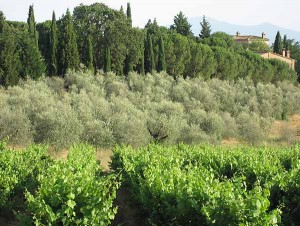GREEN
“Green is life,” people often say. This statement is somewhat superficial and contains only a grain of truth:
When you look at green leaves, you are not looking at life itself but at the results of life processes. Seeing green leaves you draw the conclusion through your past experience that the plant is alive. Green is a pattern, a symbol of vegetable life. Life is designed in green. Life is wearing a green dress.
On closer examination you have not seen life itself, but only different forms how life expresses itself. To watch life would at least involve a temporal aspect; and looking at green leaves is rather static.
This is why you would never paint a room leaf green in order to create a lively mood. It doesn’t work. A leaf green room appears rather static, and does not communicate any impression of being alive! On the contrary a green room can promote a lethargic mood, it can be perceived as dull, boring, hidebound – or quiet and restful.
No other colour is as rich in shades than green. Green appears in plurality, in an enormous variety of shades. They range from the silver turquoise of an olive tree up to the pasty greenish yellow of a seedling. Think of the edge of a forest: Viewed from a distance, in-between the trees you find deep shadowy areas of blackish green. Imagine the new born green of a beech-tree in spring when it is lit from behind by the sun! The leaves take a bath in the light!
All that greens are images of life, showing how life mediates between light and earth, air and water. Bluegreens are more related to water and earth than yellow greens, which show more correlation to light and air.
And in the way, the green colour originates between blue und yellow, vegetation finds its balance in the process of photosynthesis, connecting the space above (air and light) with the space below (earth and water).
The green leaves are all precisely defined. You can´t believe how many different forms green leaves can take! Therefore we think of green shades and shapes in conjunction with one another.
Within the multiplicity of greens the shapes define objects and grant physicality to them.
No other colour has this tendency to appear in clearly outlined physical forms.
Even if blue and green are neighbours in the colour wheel and merge into another, they represent quite different worlds. The former you cannot capture, the latter you are invited to touch, to count, to measure, to draw, to cut, to eat and even to examine under the microscope.
There is a saying: to see things through rose-coloured glasses – through which things are less distinct, softer and more comfortable. Rose tinted clouds change their shape every second.
Rose is complementary to green. If you put on your green-coloured glasses, you are well prepared to write a dissertation. You wouldn’t ignore any facts.
Martin Benad, www.color-consult.com